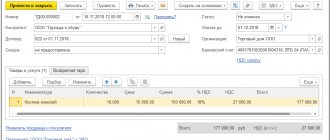Financial literacy is not only about knowledge of formulas and the ability to count correctly. It is especially important to use such knowledge when calculating interest on a loan. Since a large number of loan offers are received, and they are presented in the most attractive way, you can inadvertently sign a loan agreement, which will ultimately result in a financial burden that the borrower will not bear. Mathematical formulas that are applied in accordance with the signed conditions will help you correctly calculate the amount of future expenses. Such mathematical abilities will help at the initial stage to choose the right offer that will bring minimal costs for using the loan. The cost of the loan will be the lowest and the conditions will be optimal.
You can learn about the intricacies of lending and how to make basic calculations from this article.
The principle of calculating interest under a loan agreement
To find out how to calculate interest on a loan, you need to pay attention to the main components of the total cost of the loan. It includes: the loan body (the amount issued by the credit institution), fees for using borrowed funds, insurance and commissions. This may not be the entire list. There may be a fee for the appraisal of property or valuables, a fee for cashing out or paying over the counter.
Loan interest is the amount of money that the applicant must pay for using the loan. This indicator can be daily, monthly or annual. In the case of a short-term loan, the small rate of daily commissions charged for using the loan will be important. Knowing its exact size, term and amount of borrowed money, you can simply make calculations and understand how much money will need to be returned together, and how much the loan will cost you per day.
Methods for calculating interest are based on special mathematical formulas of simple interest, compound interest, using a floating or fixed rate.
The method of their calculation is necessarily indicated on the first page of the contract. If there is no such information, then the amount of money accrued for use will be calculated using the simple interest formula. The contractual agreement also specifies the rate on which all calculations are made. If the rate is not specified, then the refinancing rate approved by the Central Bank of the Russian Federation, which is 7.25% per annum, is taken as the basis.
Important. If you cannot understand how to calculate the payment amount using formulas, or you are confused about the indicators, refer to an online calculator. On the electronic pages of many credit institutions there is an option that will pre-calculate your financial burden. This way you can assess your financial capabilities in advance and avoid getting into a more difficult situation.
Collection
If the borrower does not pay the debt and interest on it, including penalties, then the lender has the right to go to court to collect the amount of the debt. The statement of claim is drawn up by the creditor and submitted to the court at the borrower’s place of residence.
The following will need to be attached to the claim:
- a copy of the loan agreement concluded between the parties and the documents attached to it (receipts, debt repayment schedule, etc.);
- a copy of the plaintiff's passport;
- copies of notices sent to the borrower about the requirement to repay the debt;
- receipt for payment of state duty.
The court will set a time and date for a meeting, to which the borrower will be summoned.
If all documents confirming the transfer of the loan are drawn up in accordance with existing legislation, then the court decision will be in favor of the lender. The borrower will be required to repay the principal, interest on the loan and accrued penalties.
Additionally, the borrower will be responsible for paying the fee. The court decision will be transferred to the bailiff service, which will collect the debt.
If the debt is not fully repaid within the time period established by the court, it can be collected by confiscating any property from the borrower.
Loan interest is an integral and very important part of the loan agreement. It is advisable to clearly state in the document the amount of interest accrued on the loan amount.
When this moment was missed due to some circumstances, the lender and borrower should be guided by Article 809 of the Civil Code. Interest can be calculated according to various schemes.
If the loan is issued for a long time, then it is more advisable to use compound interest and capitalize the loan monthly. In this way, the lender can receive additional profit.
When repaying a loan, it is not recommended to be late, since penalties may be applied to the borrower, which can lead to a significant increase in the initial loan amount. All issues between the borrower and the lender are resolved in court.
How an interest-free loan is issued to a legal entity is described in the article: loans to legal entities. Find out how to find cash loans from individuals here.
Read the description of a loan secured by a garage on the page.
Calculation procedure
To apply any of the formulas, you need to know the meanings of all its components:
- the exact amount of borrowed money;
- the rate at which interest is calculated;
- terms in days.
Armed with this information, you can calculate how many rubles a client pays per day. By comparing these results for a number of credit institutions, you can choose the most inexpensive option. Where the minimum loan amount is charged, it is profitable to accept the offer. When making calculations, it is important to know the exact indicators. Use real values for the number of days (especially in short-term loans), where the amount grows every day. The interest rate is specified in the agreement and can be changed if the borrower violates the loan terms.
Self-calculation and its advantages
The positive aspects of independently calculating interest on undertaken obligations are as follows:
- if the lender charges “additional” interest not provided for in the agreement, the borrower sees the changed final amount;
- you can challenge the creditor’s decisions before his representatives, or by seeking legal proceedings;
- Having previously calculated the final amount, the borrower can choose a more favorable loan offer.
It is always worth focusing on the calculation method. It is easier to calculate the required amount when interest is calculated under a loan agreement using a simple formula.
Large financial structures prefer the dependence of the repaid loan on floating factors. Calculation and recalculation of interest is always more profitable for the lender than fixed amounts. Some banks apply penalties for early loan repayment. In this case, the borrower will have to repay the loan, pay interest for its use, and even pay off the bank with fines.
By carefully reading the text of the concluded agreement, you can protect yourself from additional waste. If disputes arise, you can always turn to the courts. Again, do not be afraid to demand clarification of actions under various circumstances:
- early repayment;
- recalculation of interest;
- delay in payment;
- late payment of principal or interest;
- sanctions;
- possibilities and requirements.
All this must be explained by representatives of the lender’s side when requested by the borrower.
Taking into account all of the above, it can be noted that the lender can charge interest under a loan agreement at the end of the contract term only if a complex formula is used to calculate the final payment.
How to calculate simple interest
The simple interest formula is the most popular among credit agreements, especially often used in short-term loans and looks like this:
Pr = SZ*GS/DKG*RPP, where:
- Pr – percentage;
- SZ – loan amount;
- GS – annual rate;
- DKG – duration of the calendar year;
- RPP – size of the payment period.
The formula for calculating the loan interest requires minor mathematical calculations. For example, if the loan agreement specifies a daily rate, then the annual rate is first calculated by multiplying the daily rate by the actual number of days in the current year. You can find out how to correctly calculate interest from various sources. In order not to complicate yourself and calculate the amount of interest on a loan, you can use a loan calculator posted on websites independent of financial institutions.
We should not forget about the case of early repayment. If the loan agreement fixes attention on a specific period, then the money must be paid regardless of the number of days remaining in reserve if the loan is closed early. When paying for the actual days of using the loan, the payment is made for the period from the first day until the date of repayment of the debt.
According to what schemes are they calculated?
The period for accrual of interest for using the loan is calculated from the date of transfer of funds to the borrower. Several schemes can be used for calculations.
Dear readers! The article talks about typical ways to resolve legal issues, but each case is individual. If you want to find out how to solve your particular problem , contact a consultant:
+7 (499) 938-81-90 (Moscow)
+7 (812) 467-32-77 (Saint Petersburg)
8 (800) 301-79-36 (Regions)
APPLICATIONS AND CALLS ARE ACCEPTED 24/7 and 7 days a week.
It's fast and FREE !
Standard
Interest on the loan is calculated on the amount of the outstanding balance. This scheme is used by most banks and microfinance companies. A schedule is drawn up between the parties to the loan according to which payments are made.
For example, an organization received a loan in the amount of 120,000 rubles for 6 months at 4% per month. The agreement stipulates that the loan will be repaid monthly, and interest will be accrued on the amount of the remaining principal debt.
The repayment schedule will look like this:
| Payment number | Amount of principal debt, rub. | Amount to repay the principal debt, rub. | Amount of interest, rub./Amount payable, rub. |
| 1 | 120 000 | 20 000 | 4 800/24 800 |
| 2 | 100 000 | 20 000 | 4 000/24 000 |
| 3 | 80 000 | 20 000 | 3 200/23 200 |
| 4 | 60 000 | 20 000 | 2 400/22 400 |
| 5 | 40 000 | 20 000 | 1 600/21 600 |
| 6 | 20 000 | 20 000 | 800/20 800 |
| total | 120 000 | 16 800/136 800 |
Thus, it turns out that the first payment on a cash loan is the largest, and the last is the smallest. The total interest amount is 16,800 rubles.
Annuity
At the time of concluding the transaction, the lender calculates the entire amount of interest and distributes it over the entire duration of the agreement.
In the above example, the interest amount would be:
120000/100*4*6=28800 rubles
Therefore, the borrower will have to pay every month:
20,000 (amount of principal) + 4,800 (amount of interest) = 24,800 rubles
Using a simple calculation, it can be calculated that when using the second scheme, the lender received 12,000 rubles more from the borrower. Naturally, this is beneficial for the lender, and it is better for the borrower to use the first payment scheme.
When a credit institution uses an annuity accrual scheme, the interest rate does not change throughout the entire loan term. The same applies to the situation when the borrower makes early repayment.
How to calculate compound interest
The compound interest formula is more often used in long-term lending, or when a client misses a payment deadline. In such cases, part of the unpaid debt is added to the loan amount. In the next credit period, money will be credited to the already increased amount.
The interest calculation scheme is applied based on the formula:
SD = SZ*(1+GS)*KP, where:
- SD – amount of debt;
- SZ – loan amount;
- GS – annual rate;
- KP – number of periods.
The interest rate on the loan issued is expressed in shares, therefore it is divided by 100.
Foreign currency loans - accounting
Lending is an integral part of economic relations. Sometimes loans and borrowings are issued in foreign currency. Let us consider the features of accounting for credit transactions in this case.
Loan agreement in foreign currency
Credit and foreign exchange transactions on the territory of the Russian Federation must be carried out in accordance with the law of December 10, 2003 No. 173-FZ “On Currency Regulation and Currency Control”.
This regulatory act generally prohibits concluding a loan agreement in foreign currency between legal entities that are residents of the Russian Federation. However, there are a number of exceptions to this prohibition. One of them concerns obtaining loans from authorized banks (clause 3 of article 9 of Law No. 173-FZ).
In addition, foreign exchange transactions between residents and non-residents (except for the purchase and sale of currency) are allowed without restrictions (Article 6 of Law No. 173-FZ).
Attention!
Therefore, obtaining borrowed funds in foreign currency on the territory of the Russian Federation is possible in two cases:
- If one of the parties to the transaction is a non-resident.
- If the lender is an authorized bank.
Accounting for foreign currency loans upon receipt
For the borrower, all operations on loans and borrowings are recorded depending on the period in accounts 66 (short-term) and 67 (long-term).
Accounting for foreign currency loans and borrowings is not carried out on separate accounts, because According to accounting rules, they are subject to conversion into rubles.
But if an enterprise uses both foreign currency and ruble borrowed funds, you can use separate subaccounts for them:
DT 52 – CT 66.1 (67.1) received a loan (loan) in foreign currency
If there are less than 12 months left until the maturity date of long-term debt, it can be converted to short-term debt. This provision must be indicated in the accounting policies of the organization:
DT 67.1 – CT 66.1
Repayment of foreign currency debt is reflected in the following entries:
DT 66.1 (67.1) – KT 52
When converting foreign currency liabilities into rubles, exchange rate differences arise. According to clause 7 of PBU 3/2006, liabilities in foreign currency should be recalculated to:
- Date of origin.
- Date of repayment (including in case of partial repayment).
- Every reporting date.
Positive exchange differences are included in the organization’s other income, and negative exchange differences are included in other expenses:
91.2- 66.1 (67.1) – negative differences;
66.1 (67.1) – 91.1 – positive differences.
If the borrower is “overdue,” then the loan should be transferred to another subaccount where the overdue debt is reflected:
DT 66.1 (67.1) – CT 66.2 (67.2).
Interest on loans is generally included in other expenses of the organization:
DT 91.2 – CT 66.3 (67.3) – interest accrued;
DT 66.3 (67.3) – CT 52 – interest paid.
The interest rate on a foreign currency loan is usually lower than on a ruble loan, because in this case, the borrower assumes the risk of exchange rate changes.
If foreign currency loans are used to purchase investment assets, then, in accordance with clause 7 of PBU 15/2008, interest on them is included in the initial cost of these objects:
DT 08 – KT 66.3 (67.3).
An investment asset is an object of fixed assets that requires preparation for use over a long period of time. The criteria for determining such an asset must be specified in the accounting policies of the organization. Usually we are talking about construction or installation of equipment.
Interest is included in the cost of the asset only during the period during which construction (assembly, installation) is in progress. After putting the asset into operation, if the loan in foreign currency has not yet been repaid, interest is charged to other expenses “on a general basis.”
On interest, as well as on the principal debt, exchange rate differences arise. In this case, the reason is the difference in exchange rates between the date of accrual of interest under the agreement and the date of their actual repayment.
Important!
Exchange differences are generally applied to other income (expenses) in the same way as the principal debt. When purchasing an investment asset, exchange rate differences in interest increase (decrease) its initial cost.
Alpha LLC received a bank loan in the amount of 100 thousand euros at 6% per annum for 1 year to purchase an automatic production line from a foreign supplier. Interest is calculated and paid once every 6 months.
See also: How to put money on your phone from a card
The loan is repaid in a lump sum at the end of the contract period. According to the accounting policy of the enterprise, the acquired object is classified as investment assets. The line was installed within 6 months. The exchange rate on the date of receipt of the loan was 70 rubles.
/Euro. On the return date - 71 rubles. /Euro.
DT 52 – KT 66.1 – 7,000 thousand rubles. (100 thousand euros) – loan received
DT 60 – KT 52 – 7,000 thousand rubles. (100 thousand euros) – paid for the purchase of the line
DT 08 – KT 66.3 – 210 thousand rubles. (3 thousand euros) – interest for the 1st half of the year is included in the cost of the line
DT 66.3 – CT 52 – 210 thousand rubles. (3 thousand euros) – interest paid for the 1st half of the year
DT 91.2 – CT 66.3 – 213 thousand rubles. (3 thousand euros) - interest for the 2nd half of the year was charged to other expenses
DT 66.3 – CT 52 – 213 thousand rubles. (3 thousand euros) – interest paid for the 2nd half of the year
DT 66.1 – KT 52 – 7,100 thousand rubles. (100 thousand euros) – loan returned
DT 91.2 – CT 66.1 – 103 thousand rubles. – negative exchange rate differences are included in other expenses
Accounting for foreign currency credits and loans when issuing them
A Russian organization can issue loans in foreign currency only to non-residents. This situation occurs infrequently in practice, but theoretically the current legislation allows it.
Loans issued at interest to an organization are financial investments and are accounted for in account 58.3:
DT 58.3 – CT 52 a loan was issued in foreign currency;
DT 52 – CT 58.3 – loan repaid.
If the agreement does not provide for the accrual of interest, then such a loan cannot be classified as a financial investment and should be accounted for as an ordinary receivable:
DT 76 - CT 52 - interest-free loan issued;
DT 52 - CT 76 - interest-free loan returned.
Interest on a loan issued in accordance with clause 34 of PBU 19/2002 can be classified as both “ordinary” revenue and other income. But because issuing loans is rarely a core activity for non-credit organizations, then, as a rule, the second option is used:
DT 76 – CT 91.1 – interest accrued on the loan issued;
Advice!
DT 52 – CT 76 – interest received.
Exchange differences arising on the principal and interest are applied to other income (expenses) of the organization in the same way as the differences when receiving foreign currency loans.
Conclusion
Foreign currency loans and borrowings on the territory of the Russian Federation can be issued by authorized banks or in settlements with non-residents. Accounting for foreign currency loans and borrowings is generally similar to ruble borrowings, with the exception of exchange rate differences.
Source: https://spmag.ru/articles/valyutnye-kredity-buhgalterskiy-uchet
Combined accrual schemes
In addition to simple and compound interest formulas, combined methods are used in lending, which are used if the calculations include not the whole, but a part of the indicator.
You need to calculate interest on annual loans, if they were paid for an uneven number of payment periods, using both formulas. It is necessary to calculate the amount of payment for entire periods using the simple interest formula, and for a split period using the compound interest formula. The results obtained need to be added up. This will be the final amount needed to repay the loan debt.
Example 1
Let Ivanov take out a loan of 10,000 rubles from an MFO for 20 days at a rate of 1.5% per day in 2021.
First, let's calculate the RATE indicator: 1.5% multiplied by 365, it turns out 547.5% per annum. Next, we substitute the available data into the formula:
DEBT = (10,000 * (547.5/100)) / 365 * 20 + 10,000 = 13,000 rubles.
As we noted above, theoretically, the simple interest formula is also applicable to conventional loans - at an annual interest rate. Consider the following example.
How is late interest calculated?
Sometimes it is not possible to adhere to the terms of the contract and make payments on time. What can the borrower expect then?
If the terms of the loan are violated by a financial institution, various sanctions may be applied. These include fines, penalties, and penalties for loans. The penalty is expressed in a fixed amount of rubles, which increases in multiples of the debt term, or may be in the nature of an increased rate. The contract must specify how penalties are calculated. In personal loans, delinquencies are usually given an entire section in the written agreement.
The penalty is calculated according to the following scheme:
Pr = RD*PPr*SNst, where:
- Pr – interest for late payment;
- RD – amount of debt;
- PPr – period of delay;
- SNst – penalty rate.
Advice. To choose the right loan, carefully read the section on penalties. In many MCCs, their size is so large that it is better to refinance and pay off the debt on time than to pay cosmic amounts of penalties.
Another case is when there is a failure to fulfill a monetary obligation.
If the receipt (loan agreement) does not provide for interest, then the amount of interest for the use of your funds is equal to the refinancing rate of the Central Bank of the Russian Federation valid for the period of your loan. You can always find out how much its rate is on the Internet by typing into the search bar the phrase “What is the refinancing rate of the Central Bank of the Russian Federation.” From September 14, 2012 to the present (summer 2014) it is 8.25%.
As of today (May 26, 2021), the refinancing rate is 9.25%. But I won’t recalculate the examples below, because... the meaning remains the same.
As of January 3, 2021, the refinancing rate is 7.75% per annum.
- Unless otherwise provided by law or the loan agreement, the lender has the right to receive interest from the borrower on the loan amount in the amount and in the manner specified in the agreement. If there is no provision in the agreement on the amount of interest, their amount is determined by the existing bank interest rate (refinancing rate) at the place of residence of the lender, and if the lender is a legal entity, at its location on the day the borrower pays the amount of the debt or its corresponding part.
- Unless otherwise agreed, interest is paid monthly until the date of repayment of the loan amount.
- The loan agreement is assumed to be interest-free, unless it expressly provides otherwise, in cases where:
- the agreement was concluded between citizens for an amount not exceeding fifty times the minimum wage established by law, and is not related to the implementation of entrepreneurial activity by at least one of the parties;
- under the agreement, the borrower is not given money, but other things determined by generic characteristics.
- In case of early repayment of the loan amount provided with interest in accordance with paragraph 2 of Article 810 of this Code, the lender has the right to receive from the borrower interest under the loan agreement, accrued up to and including the day of repayment of the loan amount in full or in part.
If the receipt provides for interest, then, of course, the calculation is based on the interest rate indicated in the receipt.
The receipt or loan agreement may or may not provide for interest for late repayment of the loan (failure to fulfill a monetary obligation).
If the agreement or receipt specifies interest on late payments, then it must be calculated based on this interest rate.
If interest is not provided for late repayment of the debt, but they do not give you the money, then we again resort to the refinancing rate of the Central Bank of the Russian Federation, which was mentioned above and calculate it based on its size valid on the day the claim was filed in court or on the day the decision was made ( you decide).
In other words, if the borrower defaults on a monetary obligation, you are currently entitled to an increase in the size of your loan of 8.25% of the loan amount per year.
- For the use of someone else's funds as a result of their unlawful retention, evasion of their return, other delay in their payment, or unjust receipt or savings at the expense of another person, interest on the amount of these funds is subject to payment. The amount of interest is determined by the discount rate of bank interest at the place of residence of the creditor, and if the creditor is a legal entity, at its location on the day of fulfillment of the monetary obligation or its corresponding part. When collecting a debt in court, the court may satisfy the creditor's claim based on the discount rate of bank interest on the day the claim was filed or on the day the decision was made. These rules apply unless a different interest rate is established by law or agreement.
- If the losses caused to the creditor by the unlawful use of his funds exceed the amount of interest due to him on the basis of paragraph 1 of this article, he has the right to demand compensation from the debtor for losses in the amount exceeding this amount.
- Interest for the use of someone else's funds is charged on the day the amount of these funds is paid to the creditor, unless a shorter period is established for the accrual of interest by law, other legal acts or agreement.
Interest tends to add up over time. Therefore, this should be kept in mind. But it must be remembered that three years after the debt is not repaid, the creditor loses the right to go to court to collect the debt, since the statute of limitations for such cases is 3 years.
In other words: if the receipt indicates that the debt should have been repaid on March 5, 2014, then March 5, 2021 is the last day to request a refund on this receipt. If the receipt does not indicate the deadline for repayment of the debt, then it is considered that you and the debtor have agreed that the money will be returned upon your first request.
You can demand the return of your debt in any way convenient for you, but if you intend to subsequently go to court, the court will need confirmed information that you demanded the debt be returned to you. Therefore, it is best to demand repayment of the debt in writing and by mail. Read how to write such a requirement here.
How to calculate interest on a loan agreement in foreign currency
Loans issued in dollars or euros (the most common foreign currency units) are settled in the specific foreign currency. In this case, payment is made in rubles at the rate fixed by the Central Bank of the Russian Federation at the time of making the payment. A loan issued in foreign currency is considered a less expensive option compared to a loan in rubles. Therefore, citizens of the Russian Federation try to borrow large amounts for a long period in foreign currency. For example, getting a mortgage or car loan is much cheaper in dollars. The overpayment is 5–12% less. This is due to the high risk of exchange rate jumps and short deadlines for repaying the debt.
Questions and answers
From what time does interest begin to accrue?
The loan agreement, unless otherwise stated in it, is considered real - it comes into force after the amount is transferred to the borrower. Interest on it is accrued from the day following the day of issue until the day of repayment inclusive - this is established by clause 3.14 of Central Bank Regulation No. 236-P dated August 4, 2003.
Is loan interest subject to VAT?
No, interest on loans is a type of payment that is not subject to VAT. This is established by paragraph 3 of Article 149 of the Tax Code.
Is it possible to suspend the accrual of interest on a loan?
Yes, the loan agreement may provide for a deferment for repayment of the entire debt or for part of it - principal or interest. To obtain it, you usually need to meet certain conditions. The availability of deferred payments and the procedure for its provision, as well as other conditions, must be specified in the contract.
Which loans are always interest-free?
The loan will be considered interest-free by default if:
- It is issued between two individuals for an amount of up to 5,000 rubles and without an agreement
- It is issued in property form
In all other cases, the interest-free condition must be specified in the contract. Otherwise, the loan will be considered issued at interest at the refinancing rate (unless otherwise specified).
Which method of calculating interest is better?
It all depends on its conditions and the characteristics of the borrower. If the amount you need is small, then it is worth taking out a loan with repayment in one payment at the end of the term. It is better to take out large loans for a long period with repayment in installments. Choose the payment schedule that is most comfortable for you - once a month, once a week or once every two weeks.
The legislative framework
Lending processes have become so widespread in the life of the Russian population that they are used in all areas and have clear regulation by the government. The laws of the Russian Federation establish the basic rules, based on which debt relations should be mutually beneficial - both for the creditor and the borrower.
The Law of the Russian Federation “On Banks and Banking Activities” introduces basic terms and fundamentals of activities. Fixes the refinancing interest rate. You should also rely on the Federal Law “On Consumer Credit (Loan)” dated December 21, 2013 N 353-FZ. In it you can find detailed information about the correct calculation of interest.
The Civil Code of the Russian Federation covers the issues of loans and consumer credits in more detail (Chapter 42).
Articles of the Civil Code laws describe in detail all stages of processing and repayment of loans. There is information about partial repayment of the loan (“On Amendments to Articles 809 and 810 of Part Two of the Civil Code of the Russian Federation”). Chapters 25 and 26 indicate liability for breach of debt. Chapter 46 describes methods and rules for cash/non-cash payments.
Note. Before applying for a loan and disbursing money, familiarize yourself with the current regulations. Knowledge of the legal subtleties will help you make the right choice of loan, and if there is a catch, a legal way to prove your right to non-payment of the loan and compensation for damage from the credit institution.







